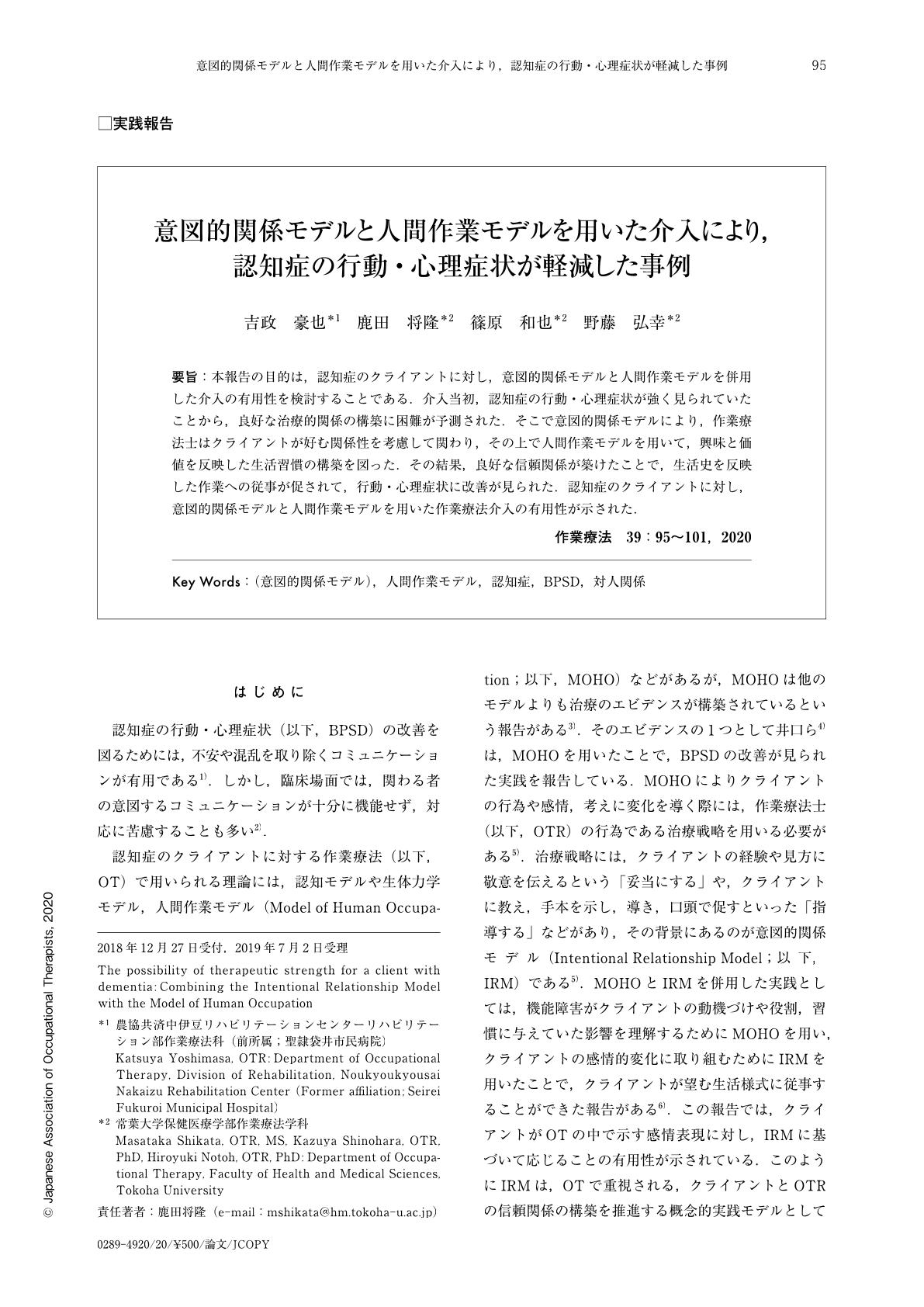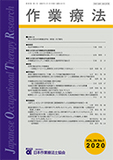Japanese
English
- 販売していません
- Abstract 文献概要
- 1ページ目 Look Inside
- 参考文献 Reference
- サイト内被引用 Cited by
要旨:本報告の目的は,認知症のクライアントに対し,意図的関係モデルと人間作業モデルを併用した介入の有用性を検討することである.介入当初,認知症の行動・心理症状が強く見られていたことから,良好な治療的関係の構築に困難が予測された.そこで意図的関係モデルにより,作業療法士はクライアントが好む関係性を考慮して関わり,その上で人間作業モデルを用いて,興味と価値を反映した生活習慣の構築を図った.その結果,良好な信頼関係が築けたことで,生活史を反映した作業への従事が促されて,行動・心理症状に改善が見られた.認知症のクライアントに対し,意図的関係モデルと人間作業モデルを用いた作業療法介入の有用性が示された.
The purpose of this report is to consider the effectiveness of the Intentional Relationship Model and Model of Human Occupation on an elderly client with dementia. In the beginning of occupational therapy, the client showed clear indications cognitive decline and behavioral and psychological symptoms of dementia. The occupational therapist established an effective relationship through the Intentional Relationship Model and assisted the client engage in occupation through the Model of Human Occupation. As a result, these models made good therapist-client rapport, reduced the client's disorganized behavior, and improved her routine, suggesting that the Intentional Relationship Model and the Model of Human Occupation are effective for an elderly client with dementia.

Copyright © 2020, Japanese Association of Occupational Therapists. All rights reserved.


